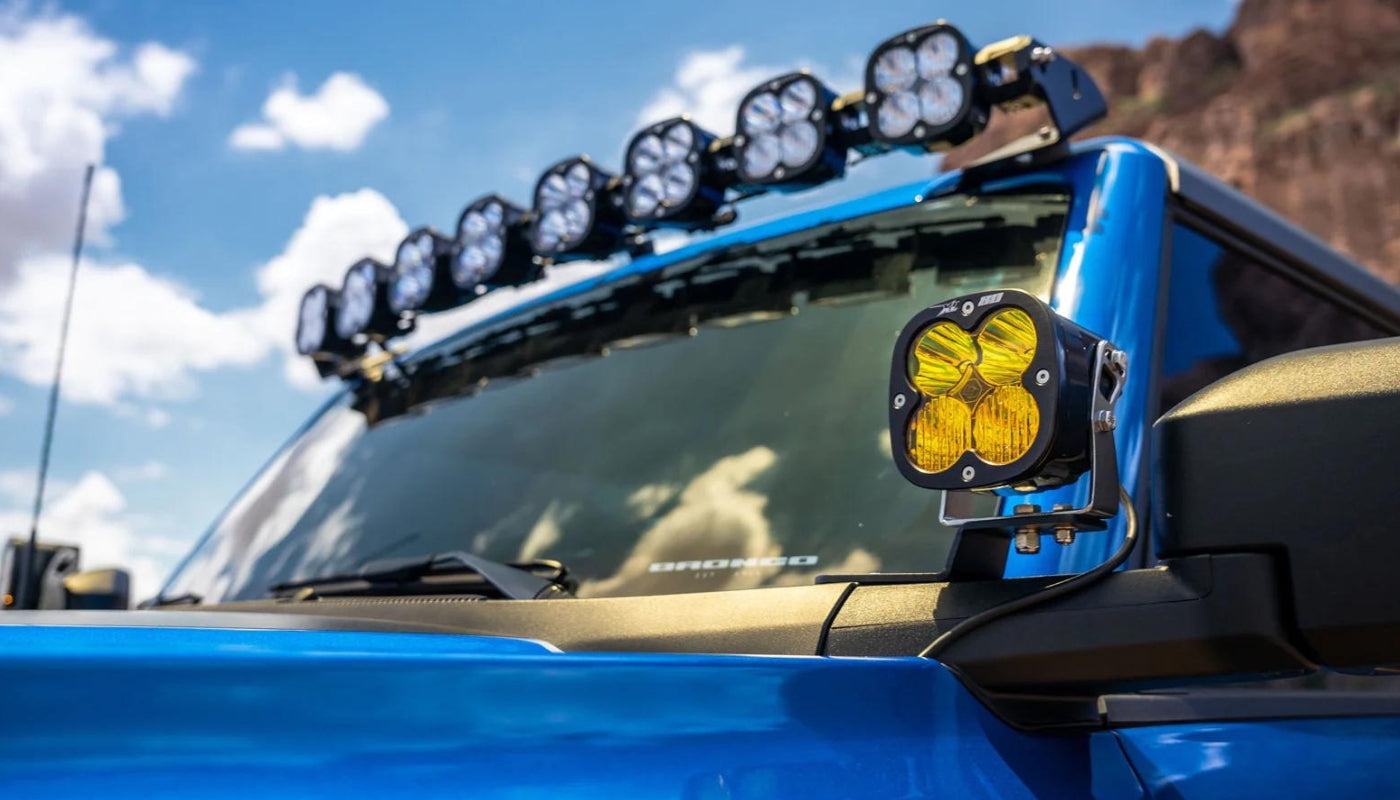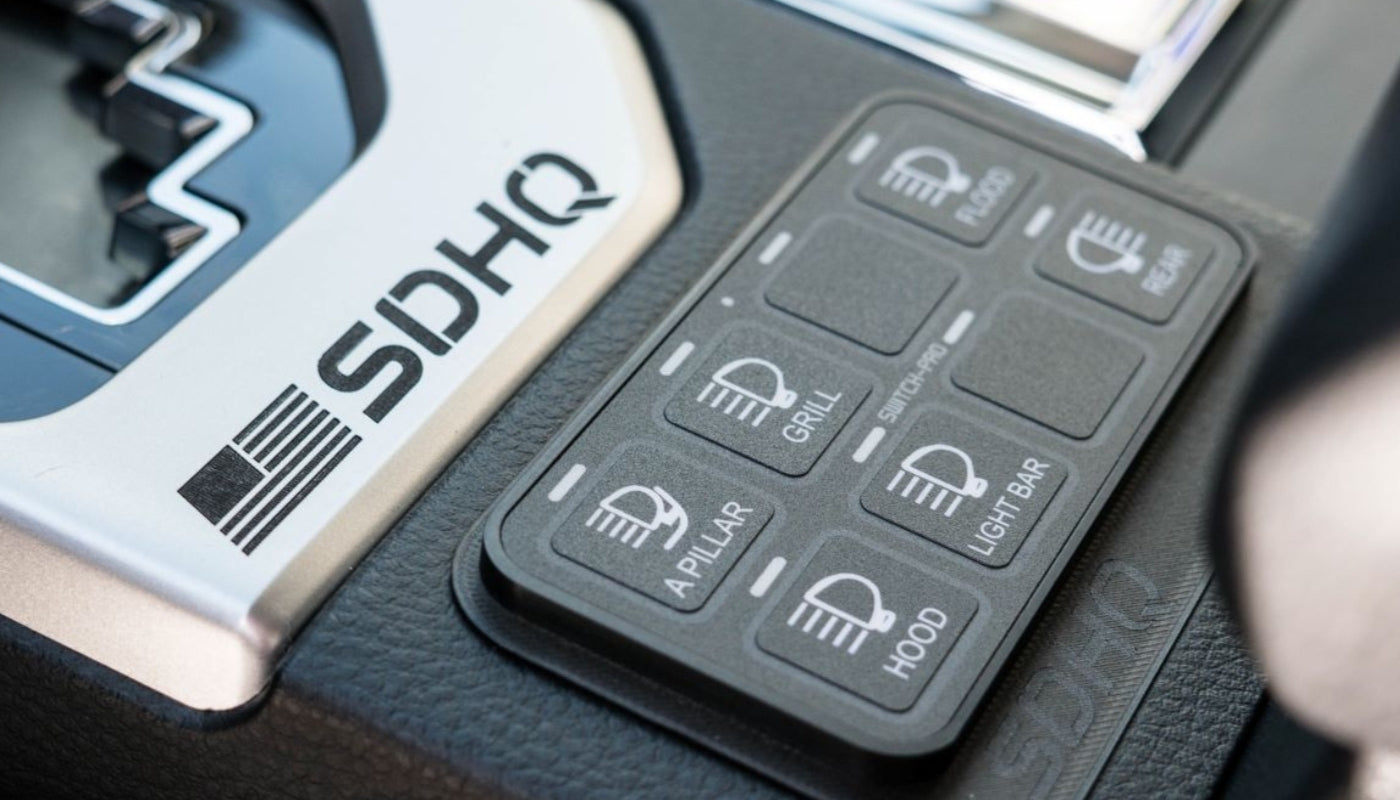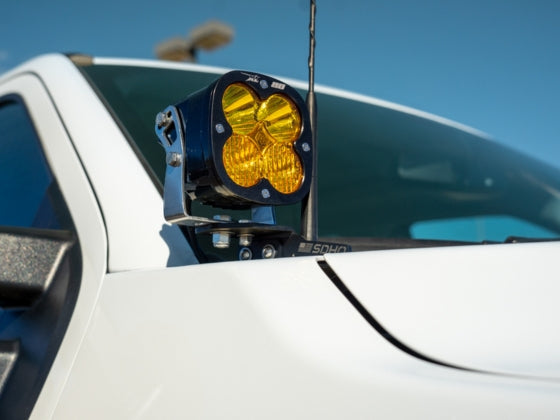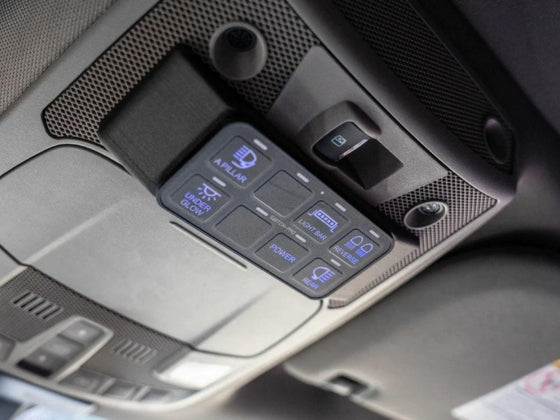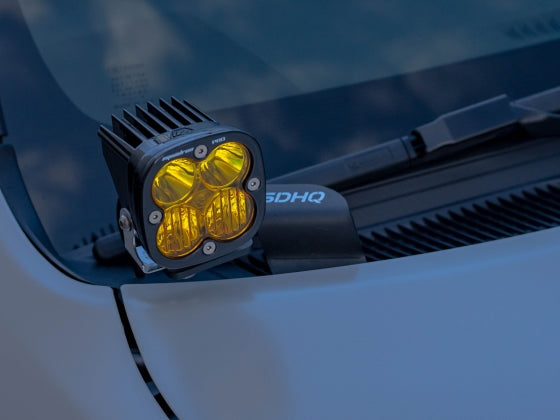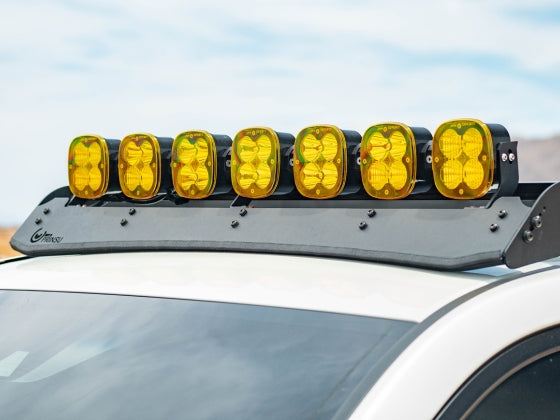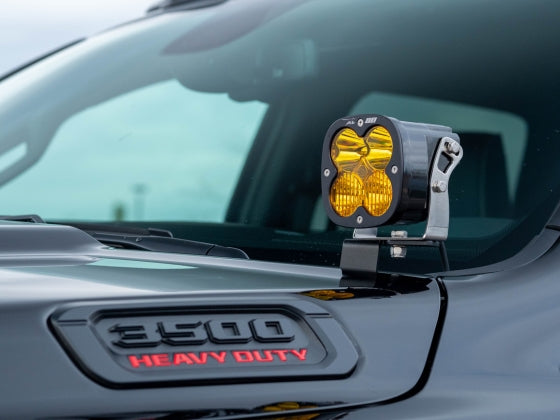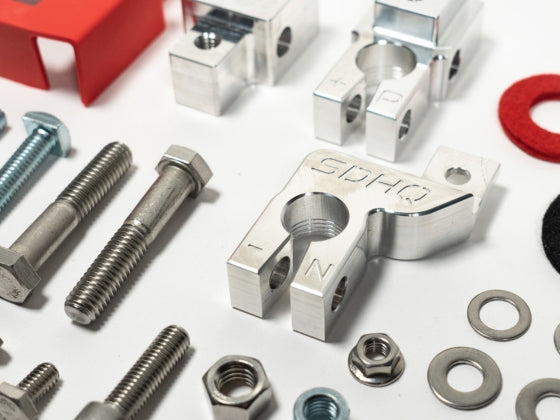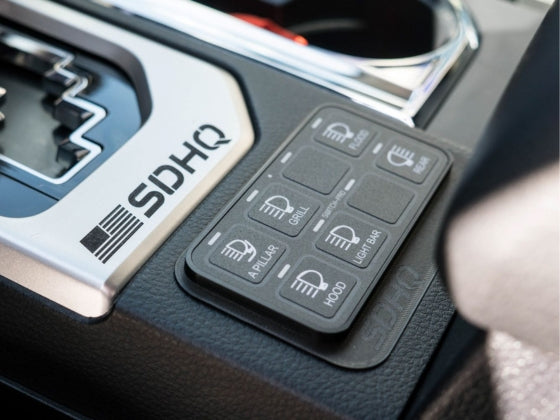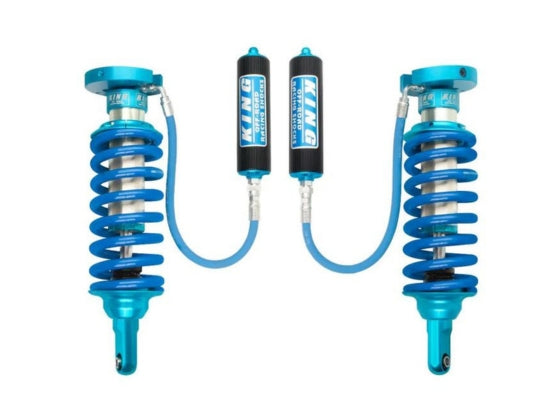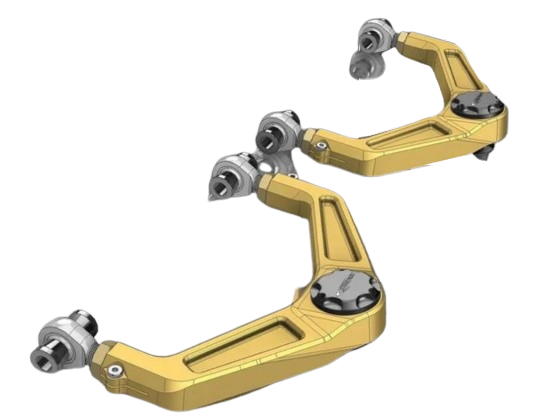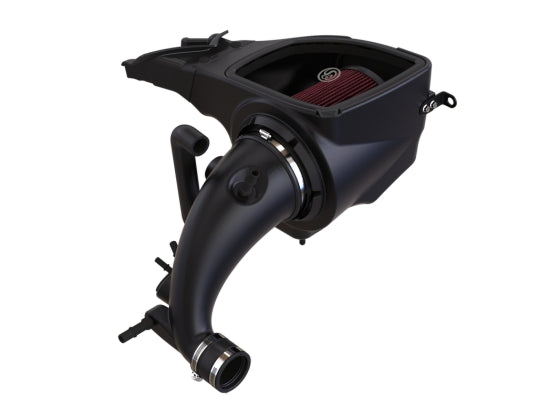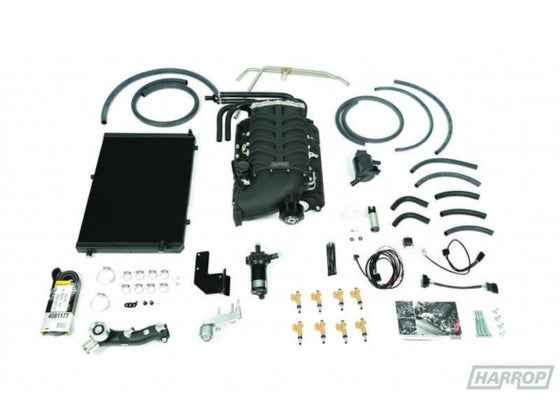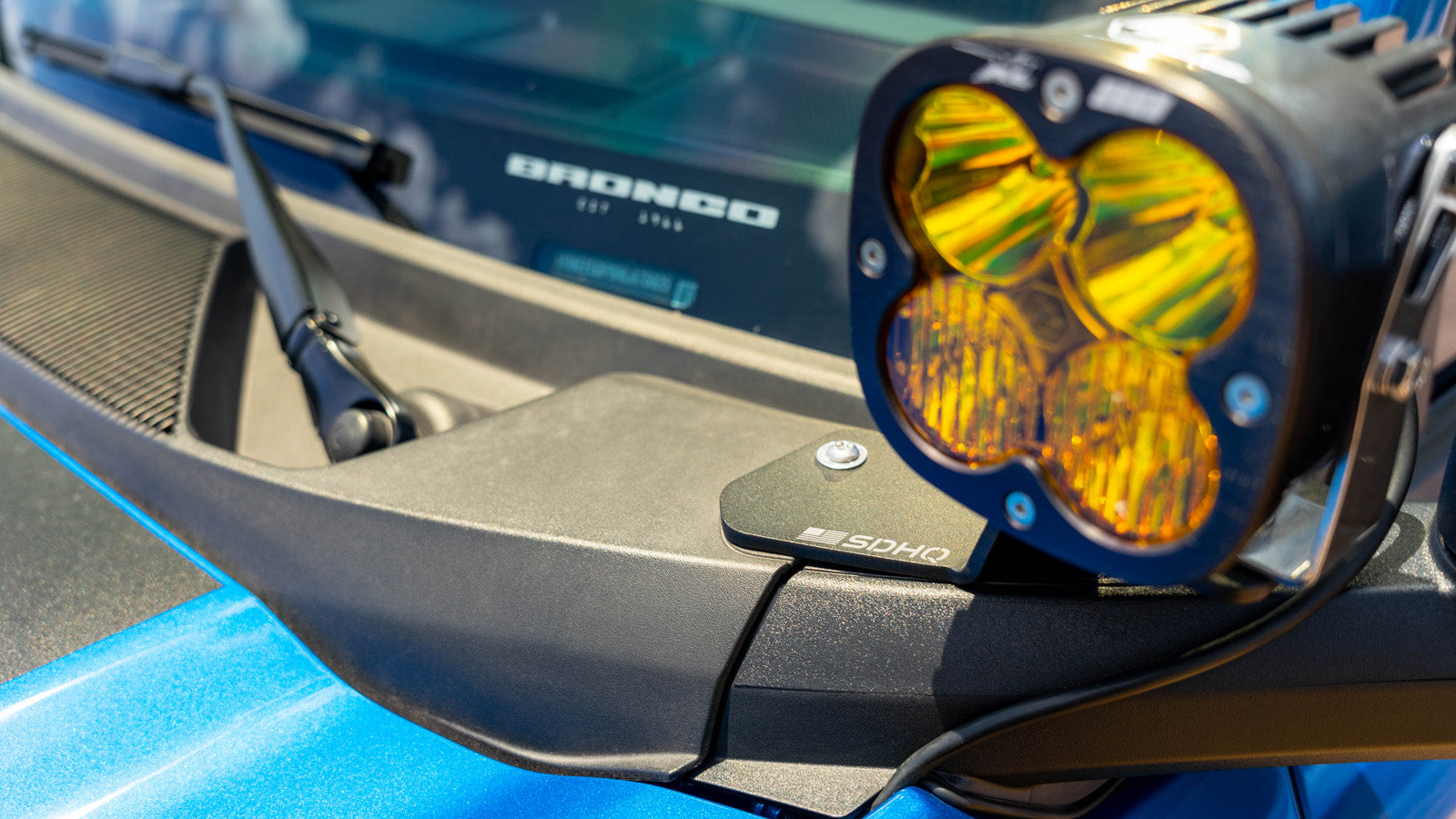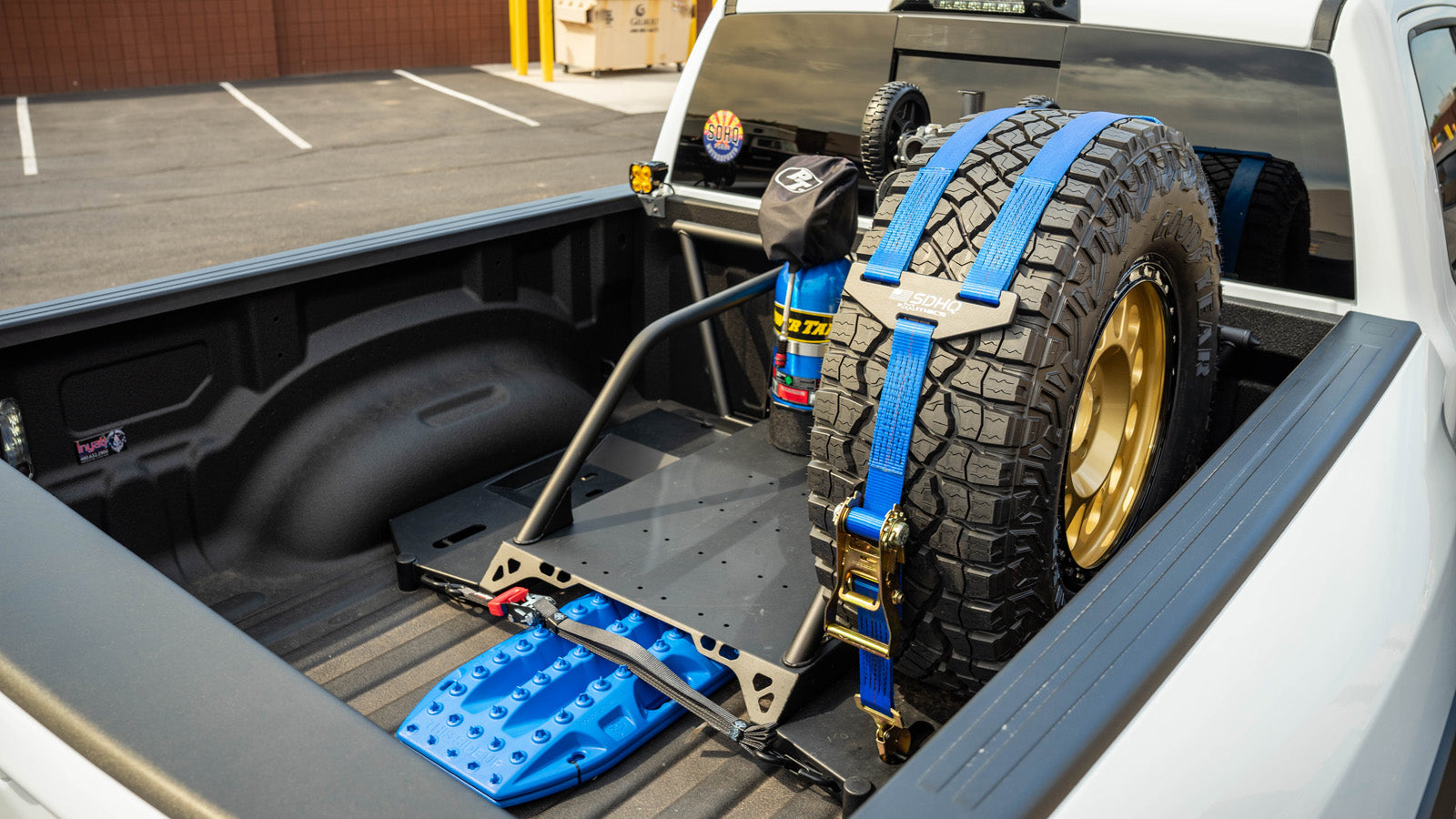What is the purpose of the SDHQ Dual Battery Kit?
TLDR; Peace of mind while exploring the great outdoors knowing you will always have ample starting power and extra amperage for accessories.
SDHQs DBKs are designed as a failsafe for vehicle starting power while out in remote locations, as well as for extra amperage while running accessories.
They come pre-wired for the basic automatic function for simplicity and peace of mind that the secondary battery will be prevented from discharging and leaving the customer stranded.
Because of this, we only recommend running all accessories off of the main battery, which is always connected to the alternator. This allows the battery that is doing the grunt work to always have charging priority, while using the secondary battery for extra amperage while the vehicle is running for lights, audio, compressors, winch, etc. As well as the ability to lock the batteries while the vehicle is off for situations where extra amperage is needed, and especially for starting if the main battery has been drained and cannot start the vehicle. This makes the system fail safe, as there will always be some sort of drain on the main battery due to the complex wiring and computer systems on modern day vehicles.
The issue with pulling load off the secondary battery exclusively, is that the secondary battery's state of charge can reach a point where the ML-ACR will go into low voltage lockout. Because the secondary battery does not have charging priority, it will not charge and further drain.
I’ve read on the forums about “House” and “Starter” batteries, how does this kit work?
Due to the complex nature of modern vehicles there's always a draw on the vehicle's main battery. Whether it is the many computer systems, the factory 12v outlets being used or the dome lights from opening the door. To make the kit fail-safe we made the second battery an isolated “Starter” battery and the main battery the “House” battery.
How does the ACR work?
TLDR; Automatically combines batteries for charging and disconnects during discharge.
An ACR parallels (combines) batteries during charging, and isolates them when charging has stopped and after battery voltage has fallen. An ACR is intended to keep a load from discharging both of the batteries. The ACR senses when the voltage of either of the batteries rises to a level indicating that a charge source is active (13.0V for 2 minutes). The ACR′s contacts then connect and the ACR applies the charge to both batteries. If the voltage on both of the batteries subsequently drops to 12.75V for 30 seconds, the ACR will disconnect, isolating the batteries.
With the automatic function of the ML-ACR, there is a built-in time delay depending on the voltage of the batteries (AGM batteries generally have higher resting voltage and thus increase time delay quite a bit for auto disconnect and is completely normal).
To set the automatic function of the ML-ACR, set the yellow lever to the REMOTE position and leave the center push button unlatched (unpressed).
In this state the ML-ACR operates as follows if it sees these voltages on either battery:
- Combines after 30 sec @ 13.5 V (ON)
- Combines after 90 sec @ 13.0 V (ON)
- Opens after 10 sec @ 12.35 V (OFF)
- Opens after 30 sec @ 12.75 V (OFF)
If you want to manually combine the batteries (ON), depress the center button while the switch is set to REMOTE to latch the batteries. Once in this state, the batteries will remain combined for a minimum of 10 min., after which it will go back into automatic function based on battery voltage.
To manually disconnect the batteries (OFF), the yellow lever will need to be switched to the LOCK OFF position which mechanically raises the center button to isolate the batteries from each other, and cannot be overridden in this mode (center button cannot physically be pushed down).
Does it matter which battery is connected to A or B studs on the ACR?
No. The ACR is dual sensing meaning it monitors both batteries and operates purely based on voltage. Connection to either stud is more so dictated by cable routing.
What are the minimum connections needed for the ACR?
3 connections. Main battery cable, secondary battery cable, and ground terminal on 6 pin connector.
Can I wire the ACR for remote in cab control?
Yes. We provide a red single wire designed to work with the popular Switch Pros unit and the correct length for use with our Switch Pros underhood mounting system.
Note: Other switches can be used, however the wiring for those is solely up to the installer, in that case we would recommend installation by a professional.
Can my alternator handle the Dual Battery Kit?
Yes.
AGM Battery note: While the factory alternator can keep the batteries topped off from daily use, it cannot properly charge AGM style batteries when they have been discharged more than 20% (due to the voltage, needs to be 14.4-14.8 for an extended time and the factory alternator typically only reaches 14.2-14.4 at max and then backs off). At that point it is recommended to use a stand alone AGM specific charger to bring the batteries back to 100% charge. Typically this only needs to be done if the batteries have been deeply discharged, however some customers prefer doing it as a monthly routine.
Upgrading to the DC Power Hi Output alternator will help with on board charging as it outputs 14.8v as well as higher amperage.
Why are 2 new matching batteries recommended?
TLDR; batteries of matching type, size, and age equally charge while combined, reducing the potential of failure.
Batteries in series or parallel applications, where more than one battery is connected to another battery should always have batteries that are identical in age, size and type. Batteries that are different from each other in any of those ways will behave differently when delivering and receiving electricity, which can leave one chronically undercharged, while the other is chronically overcharged, shortening the lifespan of both. Having dissimilar sized batteries can also be potentially hazardous (The result is typically smaller batteries will over-discharge and overcharge while larger batteries will not fully recharge. In exceptional circumstances an over-discharged battery may leak or explode).
What cable does SDHQ use in their kits?
Our new motorsports battery cable has the flexibility of welding cable with superior oil and abrasion resistance by utilizing dual insulating jackets. Typical EPDM welding cable is susceptible to swelling of the insulation when exposed to oil, and typically not recommended for automotive use (what those other guys use). Compared to typical standard battery cable, it is much more flexible and slightly larger in diameter due to a higher wire strand count of smaller diameter copper and thick yet flexible insulation. Rated at 600 volts for intermittent use (up to 3 hours).
105 C, is the heat rating in degrees Celsius for continuous use. SAE J378C is the marine specification it meets, and J1127 is the automotive specification it meets. The cable also has per foot marking on it as well.
AWG 2, stands for American wire gauge - size 2, or as most refer to it as 2 gauge. This is the major size used in the kit for combining batteries. We also use 4 gauge for the second battery to frame ground and 6 gauge for both batteries to ground to the body.
Can I add solar panels to this kit?
Yes! Utilizing our Toyota Multi-Platform REDARC Solar Regulator Mount (P/N: 50-1142-U1), and a REDARC Solar Regulator (available in 10, 20 and 30 amp capacities), you can easily add solar panels to our kit (or even to a single battery setup). We recommend the buy once cry once method and utilize the 30 amp version (P/N: SRPA0360) in case you decide to upgrade panels as solar is always improving in technology. Utilizing REDARC’s 5FT Anderson to Battery Cable (P/N: SRC0010), the solar regulator will be connected to the main battery (charge priority explained above). Then all that is left is to spec out the needed cable lengths and panels from REDARC.
Do you make any solar panel mounting kits?
No, not currently.
Why don’t you offer a REDARC DC to DC charger option?
TLDR; We feel the Blue Seas ML-ACR is better suited for the simplistic design and fail-safe operation of our kit.
The RedARC DC to DC charger is better suited for an isolated battery located far away from the alternator and main battery and it only charges at 20 amps. It essentially sacrifices amps for a voltage boost needed for longer cable runs and does not allow the higher current capacity by locking the batteries together for situations like winching or the ability to self-jump start. It is best suited for RVs where the entire system is designed for separation or for camping trailers with a self-contained battery system, where the battery would not sufficiently charge through the 7 pin trailer plug (or other long cable run).
